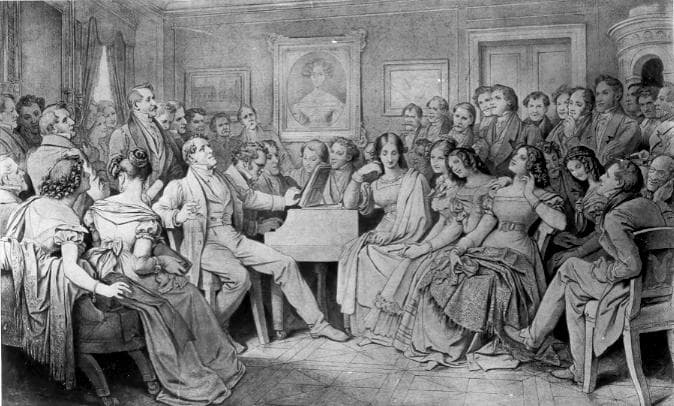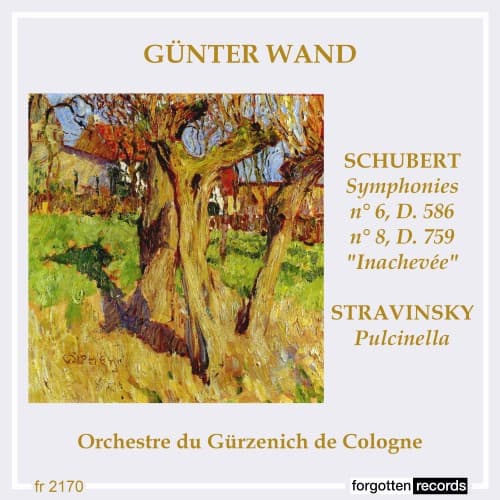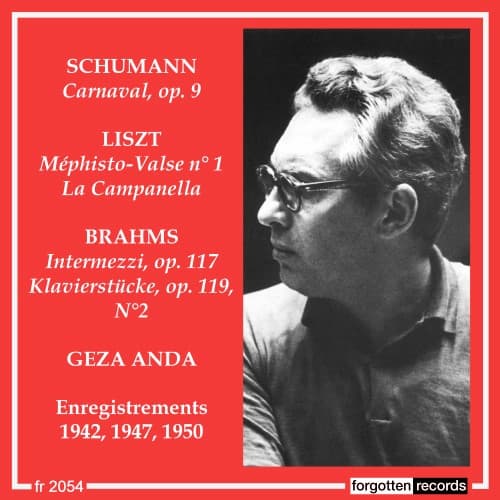Written in 1822 to acknowledge a Diploma of Honour from the Styrian Music Society in Graz, Schubert’s Symphony No. 8 in B minor was kept by its dedicatee, Anselm Hüttenbrenner, who, along with his brother, had been behind the Music Society’s diploma. When he sent the manuscript, Schubert noted that the work was not yet complete. Presumably, if a performance had been scheduled, he would have come up with the missing movements – as it is, all we have are sketches for a third movement, Scherzo.
Franz Schubert (1797–1828) was only 25 years old at the time and known as a skilled composer of lieder. He had been writing instrumental music for years, but it did not have the audience his lieder had. At a time when home performances were at a premium, such as during his ‘Schubertiade’ evenings, large instrumental works had to wait for better times in Vienna. In Moritz von Schwind’s 1868 drawing, done some 40 years after Schubert’s death, we have the composer at the piano, singer Johann Michael Vogl singing, and a room full of Schubert’s friends, all in front of a picture of the Countess Karoline Esterházy.

Mortiz von Schwind: A Schubert Evening at Josef von Spaun’s, 1868
It wasn’t until 1865 that the manuscript came to light when Hüttenbrenner gave the manuscript to the Gesellschaft der Musikfreunde in Vienna for performance to benefit poor Schubert’s relatives.
The standard Classical-era symphony has four movements, and so many different composers have tried to complete the work using what Schubert left: piano sketches and 20 measures of full score for the Scherzo and then using the entr’acte music from the incidental music for Rosamunde as the final movement. The Rosamunde music is in the same key of B minor, an uncommon key at the time, and therefore, it was assumed to be a lost part of the Symphony in B minor.
Schubert’s Unfinished is considered by some to be the first Romantic-era symphony because of its emphasis (as in so much of Schubert’s music) on the lyrical rather than the structure. Schubert’s orchestration, too, focuses on combining instruments to create specific instances of timbre that would be so prominent in music by Berlioz, for example.
Today, we’re happy to have the two movements and leave them as they stand in honour of Schubert’s achievement rather than trying to fit them into a more standard Classical four-movement format.
Franz Schubert: Symphony No. 8 in B minor, D. 759 “Unfinished” – I. Allegro moderato
The Gürzenich Orchester Köln was founded in 1827 by the Concert-Gesellschaft Köln and has been the official orchestra of the City of Cologne since 1888. It started as the Cölner Concert-Gesellschaft” (Cologne Concert Society) and took on the Gürzenich name when they moved into the hall in 1857. As an orchestra, it has played many significant premieres, including Brahms’ Double Concerto for Violin and Cello (1887), Richard Stauss’ Don Quixote (1898) and Till Eulenspiegel’s Merry Pranks (1895), and Mahler’s Symphonies No. 3 (1902) and No. 5 (1904).
Günter Wand was its longest serving kapellmeister, leading the orchestra from 1946–1974. The Gürzenich is the Banquet Hall of Cologne, originally built in the early 15th century; the orchestra is now based in the Kölner Philharmonie.

Performed by
Günter Wand
Gürzenich Orchester Köln
Recorded in 1958
Official Website
For more of the best in classical music, sign up for our E-Newsletter



